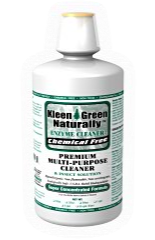- Home
- Biting Mites
Biting Mites
The Mysterious Biting Mite

| Common Name | Scientific Name | TESTIMONIAL "Kleen Free Enzymes came through when no other product could. Connecticut |
| Northern Foul Mite | Ornithonyssus sylviarum | |
| Chicken Mite | Dermanyssus gallinae |
Many are reporting being attacked by a by near-microscopic biting mites that leaves the skin red, itchy, or stinging and covered in a patchy rash. Some have been plagued for months, even years.
Many, many people have been to numerous doctors and tried every over-the-counter remedy they could find, all to no avail. Kleen Green contains active and organic enzymes which gives dramatic relief to the crawling, biting, stinging on the skin. This may be sprayed freely on all surfaces in the home. Enzymes digest and dissolves organic matter on floors, walls, furniture and bed.
Kleen Green may be used in soaking bath, as a shampoo and as a soothing topical application to the skin. Some of these stubborn mites seem to be more active at night, causing restless insomnia. The bath or applying to the skin calms the skin and relieves the itching. Kleen Green may be used as often as necessary. It has no side effects, is hypoallergenic and completely biodegrade. It is not a pesticide and is totally nontoxic. Most individuals with this disease report disturbing crawling, stinging, and biting sensations, as well as non-healing skin lesions, which are associated with highly unusual structures. These structures can be described as fiber-like or filamentous, and are the most striking feature of this disease. In addition, patients report the presence of seed-like granules and black speck-like material associated with their skin. (Description of Morgellons Disease from www.howIcuredmoregellons.com web site.)
Most individuals with this disease report disturbing crawling, stinging, and biting sensations, as well as non-healing skin lesions, which are associated with highly unusual structures. These structures can be described as fiber-like or filamentous, and are the most striking feature of this disease. In addition, patients report the presence of seed-like granules and black speck-like material associated with their skin. (Description of Morgellons Disease from Morgellons.org web site.)
| Mites Can Cause an Allergic Reaction in Some People. There are numerous mites that are capable of invading our homes. Mites that originate from animals can easily enter a home (due to their tiny size) through tiny entrance points around windows, doors or any other space large enough for them to squeeze through. Other mites that originate from plants do not migrate as well as other mites, but they can enter our homes by hitching a ride on anyone that works in gardens, hot houses, nurseries or even children playing outdoors. Most plant mites do not bite but they can be an annoyance when their numbers are high. |
Biting Mite Magnification
THE FOLLOWING PICTURES WERE PROVIDED TO US, COMPLIMENTS OF A CUSTOMER WHO USES KLEEN GREEN ENZYMES FOR MICROSCOPIC SKIN MITES/PARASITES. DESCRIBED AS A HORRENDOUS, DEBILITATING, LOATHSOME, HARD TO DIAGNOSE AND HIGHLY CONTAGIOUS CONDITION.
 Loading... Please wait...
Loading... Please wait...








